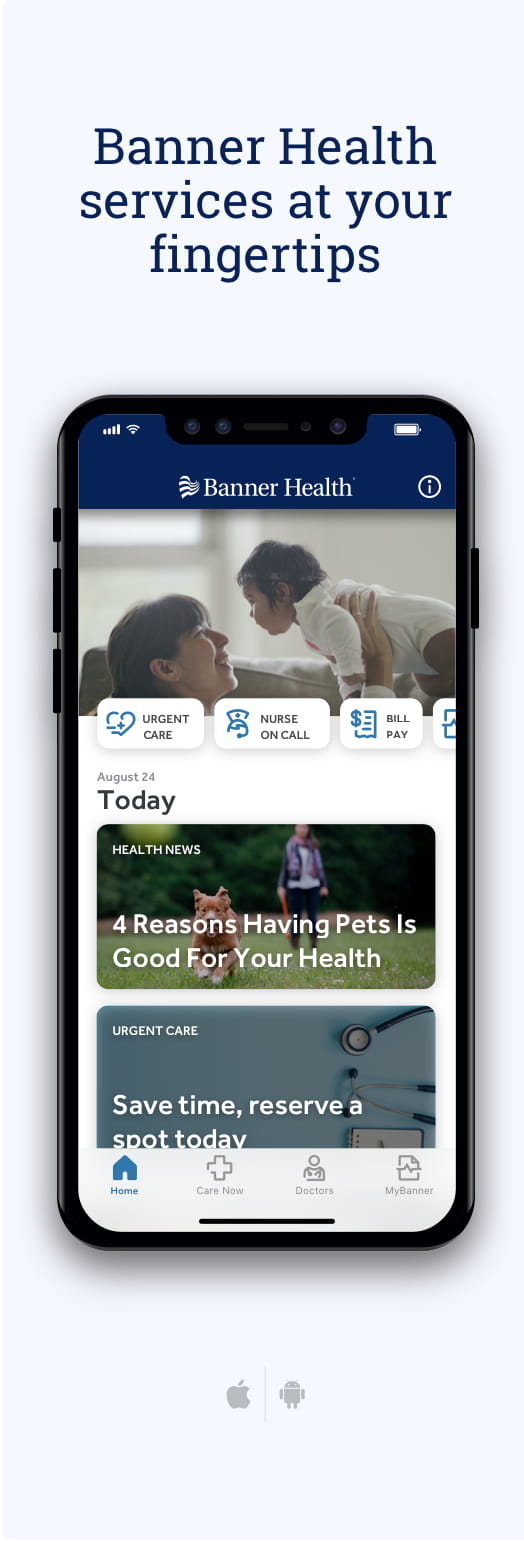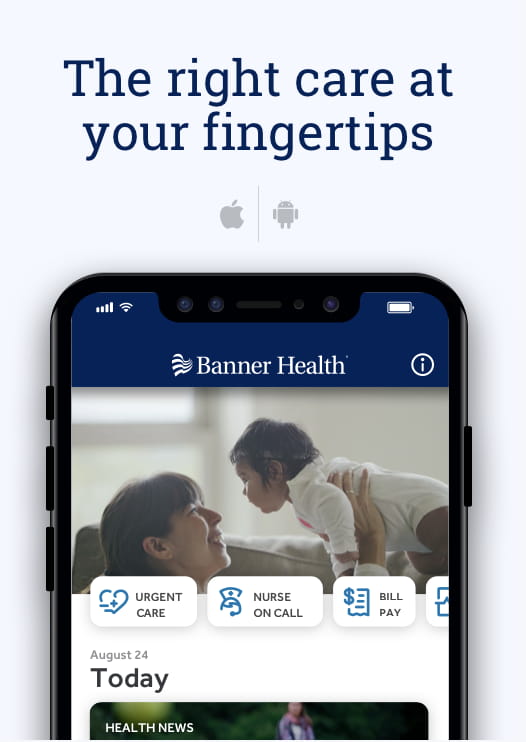Hablemos de algo que quizás no sea fácil de abordar en conversaciones informales: las hemorroides . Aunque rara vez son peligrosas, son más comunes de lo que crees y pueden ser un verdadero fastidio en... bueno, ya sabes dónde.
Ya sea que esté lidiando con hemorroides o simplemente tenga curiosidad sobre qué son, Bradford Keeler , DOCTOR, un cirujano general especializado en cirugías de colon y recto en Banner Health, nos ayuda a llegar al fondo del asunto.
¿Qué son las hemorroides?
Las hemorroides son acumulaciones de venas hinchadas en la zona rectal y anal. Al igual que las varices, estas afecciones se relacionan con el aumento de la presión sobre las venas, lo que provoca hinchazón.
“Las hemorroides pueden formarse internamente, dentro del recto, donde no se pueden ver, o externamente, desarrollándose debajo de la piel alrededor del ano”, dijo el Dr. Keeler.
¿Quién tiene mayor riesgo de sufrir hemorroides?
¿Te preguntas cómo aparecen estos indeseables invitados? Algunas razones comunes incluyen esforzarse demasiado al defecar, estar sentado en el inodoro demasiado tiempo (sí, usar el móvil no ayuda), levantar objetos pesados y estreñimiento crónico.
Otros factores que pueden ponerle en mayor riesgo son:
- Embarazo: Las personas embarazadas a menudo desarrollan hemorroides debido a la presión que el bebé en crecimiento ejerce sobre las venas rectales.
- Edad: A medida que envejece, el tejido que sostiene las venas del recto y el ano se debilita y comienza a estirarse, lo que aumenta la probabilidad de desarrollar hemorroides.
- Obesidad: el peso adicional puede ejercer presión sobre las venas pélvicas.
- Dieta: Las dietas bajas en fibra pueden provocar esfuerzo durante las evacuaciones intestinales debido a heces más pequeñas y duras.
¿Cómo sé si tengo hemorroides?
“Los síntomas de las hemorroides pueden variar desde sentir un bulto indoloro alrededor del ano y sangrado indoloro hasta dolor al defecar o una mezcla de algunos o todos los anteriores”, dijo el Dr. Keeler.
Las hemorroides internas suelen ser indoloras. Es posible que ni siquiera sepas que las tienes hasta que veas sangre roja brillante en el papel higiénico o en la taza del inodoro. A veces, las hemorroides internas pueden crecer lo suficiente como para sobresalir del ano (hemorroides internas prolapsadas). Esto puede causar picazón.
Las hemorroides externas son más incómodas. Se pueden palpar o ver y pueden causar más molestias, picazón y dolor.
En ocasiones, las hemorroides externas pueden ver bloqueado el suministro de sangre por un coágulo, convirtiéndose en hemorroides trombosadas. Si se forma un sangre , el dolor puede ser repentino e intenso, pero generalmente no es grave. El coágulo suele reducirse con el tiempo, pero puede dejar un exceso de piel (un acrocordón), que puede causar picazón o irritación.
¿Necesito consultar a mi proveedor de atención médica por una hemorroide?
La mayoría de las hemorroides se pueden tratar en casa, pero si no está seguro, informe a su médico para que le realice un examen físico. Es fácil confundir los síntomas de las hemorroides con los de fisuras anales o algo más grave, como colitis ulcerosa o cáncer de colon, recto o ano .
Si tiene hemorroides, aquí hay algunos tratamientos caseros para ayudar con sus síntomas:
- Tome un baño de asiento: Pase de 10 a 20 minutos en un poco de agua tibia. Agregue bicarbonato de sodio al agua para reducir la inflamación, pero evite el jabón y los baños de burbujas.
- Aumente su consumo de fibra : Incorpore más fibra a su dieta con frutas, verduras, cereales integrales, suplementos de fibra como Metamucil o una combinación de estos. Esto facilita la evacuación de las heces y reduce la necesidad de hacer esfuerzo. Incorpore fibra gradualmente a su dieta para reducir los síntomas de hinchazón o gases.
- Mantente hidratado: bebe mucha agua para mantener las cosas suaves y menos dolorosas cuando vayas al baño.
- No te fuerces demasiado: hacer fuerza al orinar puede empeorar las hemorroides. Tómatelo con calma y deja que la naturaleza actúe.
- Encuentre alivio sin receta: considere usar cremas, ungüentos o almohadillas que contengan hidrocortisona o hamamelis para ayudar a reducir la hinchazón y la irritación de la piel.
“Las cremas y ungüentos funcionan bien para las hemorroides externas”, dijo el Dr. Keeler. “Para las hemorroides internas, se necesita un tratamiento con supositorios con un dispositivo de aplicación interna similar a un enema de baja presión”.
¿Las hemorroides requieren alguna vez cirugía?
Si su hemorroide es grande y no responde al tratamiento, su médico podría recomendarle cirugía. Sin embargo, solo un pequeño número de personas la requiere.
“Todos tenemos hemorroides, pero solo algunas personas tendrán problemas”, dijo el Dr. Keeler. “Entre el 50 % y el 75 % de las personas tendrán algún tipo de irritación hemorroidal a lo largo de su vida, pero solo el 5 % necesitará cirugía”.
Hoy en día existen varios tratamientos para tratar las hemorroides. Algunos pueden ser más eficaces que otros para prevenir su reaparición. Estos tratamientos incluyen:
- Ligadura con banda elástica: Este es un procedimiento común en el consultorio donde se coloca una pequeña banda elástica alrededor de la base de la hemorroide, cortando su irrigación sangre . La hemorroide se desprende durante las deposiciones normales.
- Hemorroidectomía: Este procedimiento quirúrgico es la forma más efectiva y completa de eliminar las hemorroides graves y recurrentes.
- Hemorroides con grapas: Este procedimiento trata las hemorroides internas sangrantes o prolapsadas. El cirujano utiliza una grapadora para extirpar el tejido sobrante y reubicar el tejido restante en su posición normal.
Otros tratamientos pueden incluir escleroterapia o coagulación láser o infrarroja, que pueden realizarse durante una visita al consultorio.
¿Hay alguna manera de evitar las hemorroides?
No siempre se pueden prevenir las hemorroides, pero se pueden realizar varios cambios en el estilo de vida para reducir las probabilidades de desarrollarlas en la vida cotidiana.
- Limita las distracciones en el baño: Intenta dejar el teléfono fuera del baño para no distraerte.
- No esperes para ir: ve al baño cuando sientas ganas.
- Evite esforzarse demasiado: Intente defecar solo de 10 a 15 minutos. Si tiene dificultad para defecar, es mejor levantarse e intentarlo más tarde que quedarse sentado.
- Consuma más fibra y beba mucha agua: Añadir alimentos ricos en fibra y suplementos a su dieta puede ser útil. Beba agua y limite el consumo de alcohol y cafeína.
- Manténgase en movimiento: Haga ejercicio y evite estar sentado por períodos prolongados. Si pasa mucho tiempo sentado en un escritorio, tome descansos frecuentes para caminar y estirar las piernas.
- Cuida tu peso: mantén un peso saludable con una dieta equilibrada y ejercicio regular.
En resumen
Aunque hablar de hemorroides no es fácil, no deben ignorarse. El tratamiento y la atención temprana pueden aliviar los síntomas y reducir complicaciones como sangrado, anemia, dolor o posible infección.
Si nota dolor, sangrado o malestar rectal que le preocupa, hable con su proveedor de atención médica o con un especialista de Banner Health .


